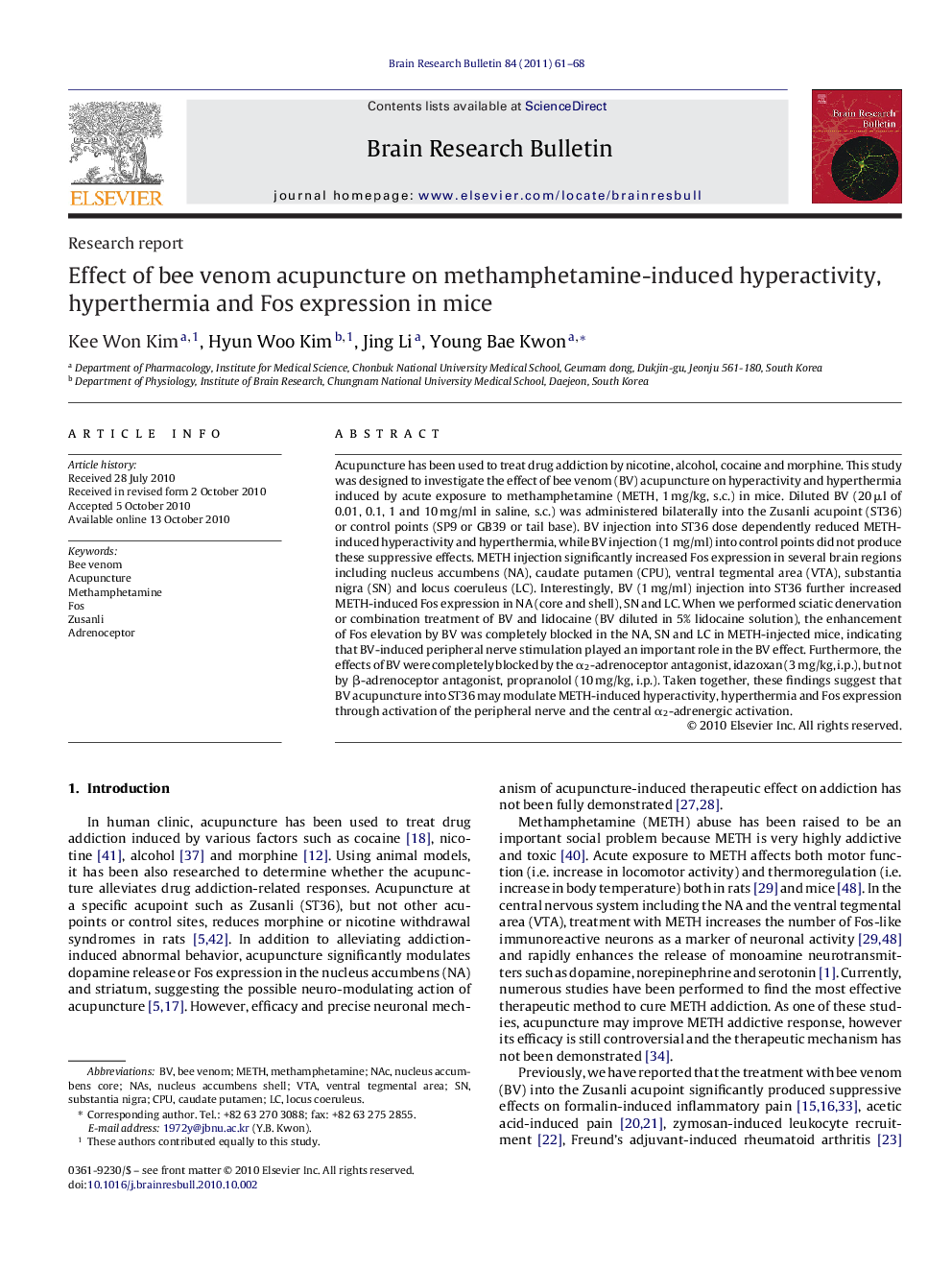| Article ID | Journal | Published Year | Pages | File Type |
|---|---|---|---|---|
| 4319229 | Brain Research Bulletin | 2011 | 8 Pages |
Acupuncture has been used to treat drug addiction by nicotine, alcohol, cocaine and morphine. This study was designed to investigate the effect of bee venom (BV) acupuncture on hyperactivity and hyperthermia induced by acute exposure to methamphetamine (METH, 1 mg/kg, s.c.) in mice. Diluted BV (20 μl of 0.01, 0.1, 1 and 10 mg/ml in saline, s.c.) was administered bilaterally into the Zusanli acupoint (ST36) or control points (SP9 or GB39 or tail base). BV injection into ST36 dose dependently reduced METH-induced hyperactivity and hyperthermia, while BV injection (1 mg/ml) into control points did not produce these suppressive effects. METH injection significantly increased Fos expression in several brain regions including nucleus accumbens (NA), caudate putamen (CPU), ventral tegmental area (VTA), substantia nigra (SN) and locus coeruleus (LC). Interestingly, BV (1 mg/ml) injection into ST36 further increased METH-induced Fos expression in NA (core and shell), SN and LC. When we performed sciatic denervation or combination treatment of BV and lidocaine (BV diluted in 5% lidocaine solution), the enhancement of Fos elevation by BV was completely blocked in the NA, SN and LC in METH-injected mice, indicating that BV-induced peripheral nerve stimulation played an important role in the BV effect. Furthermore, the effects of BV were completely blocked by the α2-adrenoceptor antagonist, idazoxan (3 mg/kg, i.p.), but not by β-adrenoceptor antagonist, propranolol (10 mg/kg, i.p.). Taken together, these findings suggest that BV acupuncture into ST36 may modulate METH-induced hyperactivity, hyperthermia and Fos expression through activation of the peripheral nerve and the central α2-adrenergic activation.
